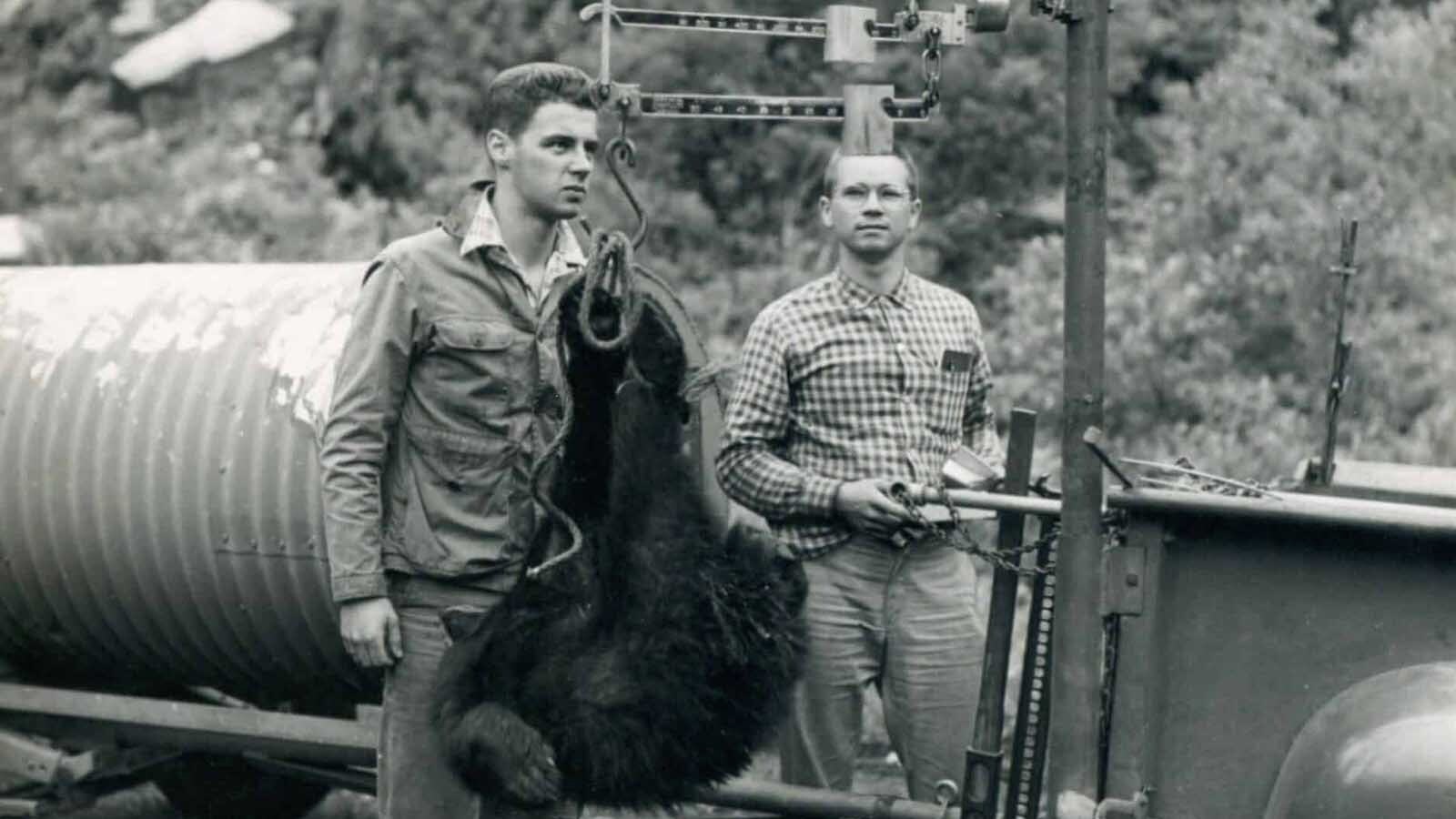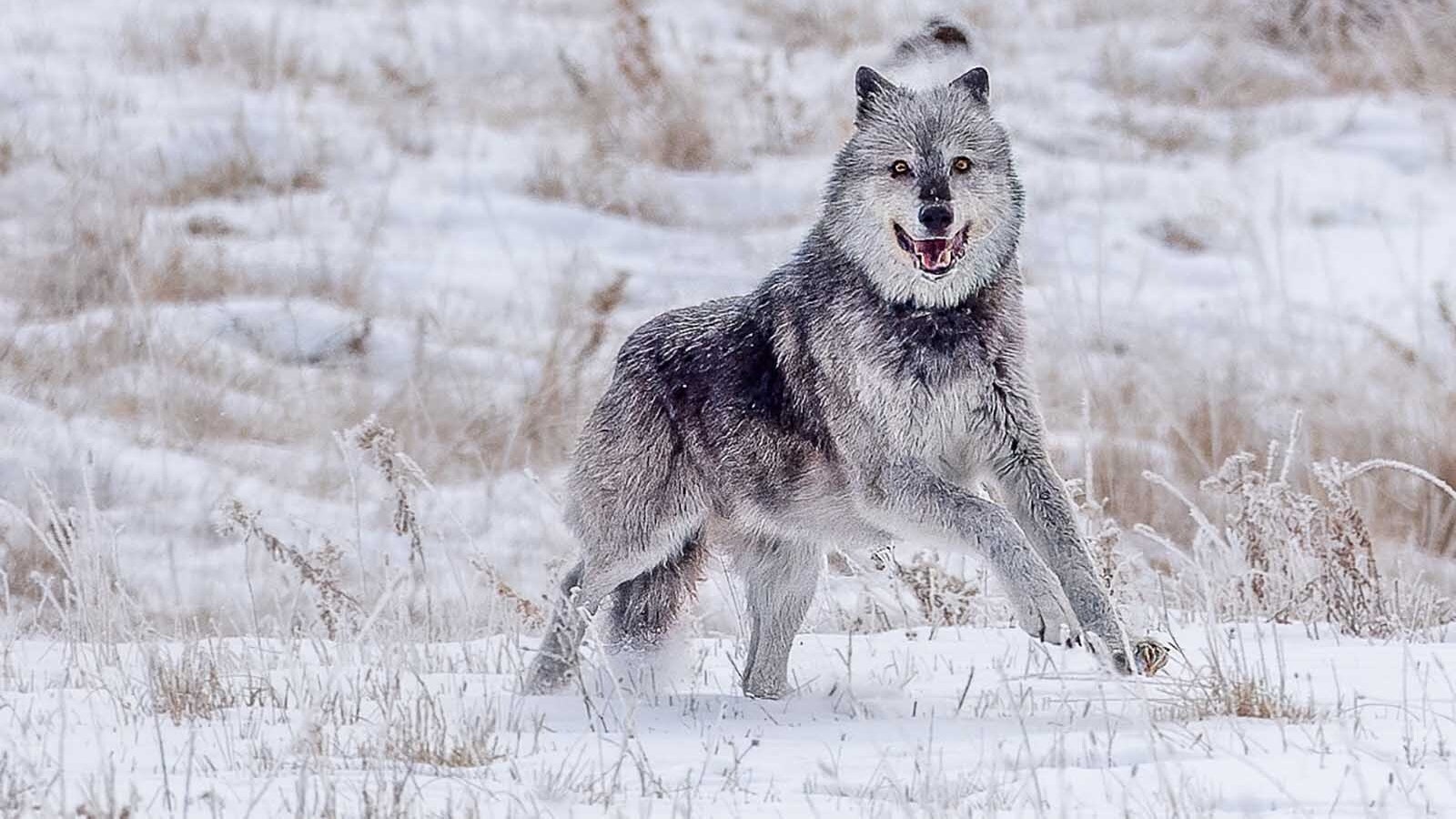Despite the sweltering heatwave that smothered Wyoming in record-breaking temperatures last week, there's still snow and ice at some of the highest points in the Snowy Range in Medicine Bow-Routt National Forest.
Alan Silverstein was hiking a six-mile off trail loop in the Snowy Range on July 12 when he encountered the floating sheets of ices on South Gap Lake.
“I know they weren’t strictly icebergs,” he told Cowboy State Daily. “They had broken off from shore and were floating ice leftover from the winter. I wasn't surprised to see snow up there, but the floating and the beauty of the water was unexpected.”
Silverstein captured a few images of the floating ice before continuing on his trek through the Snowy Range. Although he’s a resident of Fort Collins, Colo., Silverstein said he’s made an annual trek through southeast Wyoming for the last 20 years.
“It was getting hot down here, and I wanted to get out of town,” he said. “The Snowy Range is such an incredibly gorgeous spot. I kayaked on the Rob Roy Reservoir, visited Saratoga, and hiked between Libby Lake and the Sugarloaf Campground. It’s harder to find a campsite now, but it’s still a happy place.”
Day And Night Cycles
Cowboy State Daily meteorologist Don Day wasn't surprised that South Gap Lake was still icy.
"I'm very familiar with those lakes," he said. "They're some of the highest lakes in the Snowy Range, and they will keep ice on them well into July, depending on how things go."
Wyoming is known to reach seasonal extremes, achieving triple-digit temperatures in July and August while dropping far-below zero in January and February. It might be impossible to find a pocket of summer in winter, but there are places where ice and snow endure during the dog days of summer.
While high-elevation winter snowpack can endure for many weeks into the hottest part of the summer, Day believes the icebergs on South Gap Lake originated from more recent snowstorms.
"There was a late-season surge in the Snowy Range," he said. "It was cold and quite snowy from March into early May so that extra ice in early July could be an artifact from that."
However, snow and ice endure in the high elevations because of Wyoming's tendency to get cool overnight. This is true across the Cowboy State, especially in areas over 11,000 feet, like the Gap Lakes in the Snowy Range.
"When you're talking about a place that doesn't get too warm during the day, and gets cold at night, things melt slowly up there," Day said. "Some roads in the Snowy Range are still blocked (with snow) by the Fourth of July, especially above 10,000 feet."
Glacial Place
Day doesn’t expect the ice on South Gap Lake to last much longer. Summer prevails, even at the highest points of the Snowy Range.
"By the time you get to the end of the month in August, you're not going to see those anymore," he said. "They might already be gone."
What about glaciers? Glaciers, by definition, are persistent bodies of ice that may decrease in size during the summer, but endure, nonetheless.
Day said anyone looking for widespread glaciers in Wyoming is a little late to the party. The last period of glaciation in the Cowboy State was between 10,000 and 12,000 years ago.
"That was last time we had any significant glaciation in Wyoming, a known cold period around 12,000 years ago," he said. "There were glaciers all the way down into the Centennial Valley during that period."
Wyoming is too far south in the Rocky Mountains to maintain the temperatures and conditions needed for larger glaciers to endure. Day said Glacier National Park is close to the southern threshold where glaciers can comfortably and stubbornly persist.
"It's very hard in the current state of the climate that we're in right now to have anything more than what we have now in the mid-latitudes," he said.
That’s how Silverstein knew that the “icebergs” he was seeing on South Gap Lake weren’t really icebergs.
“An iceberg is something that calves off a glacier,” he said. “I was kidding when I called them ‘icebergs.’ They were actually just flat pieces of snow ice.”
Permanent Pockets Of Ice
Still, small glaciers can be found in Wyoming's highest elevations. They're not particularly large or impressive, but according to Day, they are true glaciers.
"You will find small glaciers in the mountains," he said. "There's a small glacier on the north end of the Snowy Range near Browns Peak that's been for a long time. There are glaciers in the highest reaches of the Wind Rivers, and some nooks and crannies of the Tetons. This is true in many mountain ranges in Wyoming and Colorado."
Silverman has encountered the Browns Peak glacier during his Snowy Range excursions. He knew of several places that tend to stay perpetually snowy at that elevation.
“Crossing snowfields at this time of year is normal,” he said. “The Snowy Range has some snow and ice fields that linger all year long, high up on Browns Peak, for example. You have to avoid them later in the year because, they're definitely hard, frozen ice.”
Day said glaciers endure mainly through position rather than temperature or elevation at these mid-latitudes. Many of these small glaciers are crevices that are shaded from direct sunlight, usually on north—or east-facing slopes, keeping temperatures cooler and preventing melting.
"Snow on the southern and western slopes will melt off," he said, "but you tend to see the north or east slopes above 10,000 feet that don't get the direct sunlight during the warmest part of the day keep snow the longest. That's where these glaciers tend to be."
Just Warming Up
Day doesn't see ice on South Gap Lake as indicative of any climate patterns or seasonal trends. There's a reason it's called the Snowy Range, after all.
"The Snowy Range is appropriately named," Day said. "It's a very big watershed up there. Summer is very short when you get that high up, and snow and ice linger for a while. Finding icebergs on July 12 might be a little bit later than you'd expect, by a week or so, but it's not earth shattering."
The early July heatwave was just the first of many Wyomingites could experience this year. According to Day's historical climate analysis, we're in the midst of the hottest time of year for the Cowboy State.
"Summer's maturing," he said. "The most persistent, hot weather in Wyoming usually occurs from the middle of July to the middle of August. We're in the four-week period that is usually the hottest, and we expect prolonged spells of hot weather."
Long-range forecasts from the National Weather Service have anticipated above-average and possibly more record-breaking temperatures throughout Wyoming for this four-week period. Day is always hesitant to forecast too far into the future, but he doesn't deny there's a trend for warmer days ahead.
"If you look at the temperatures for the first nine days of July, they were far below average across the state," he said. "For the second half of July and the first half of August, I would say that that's a good bet we'll have above-average temperatures."
Andrew Rossi can be reached at arossi@cowboystatedaily.com.











